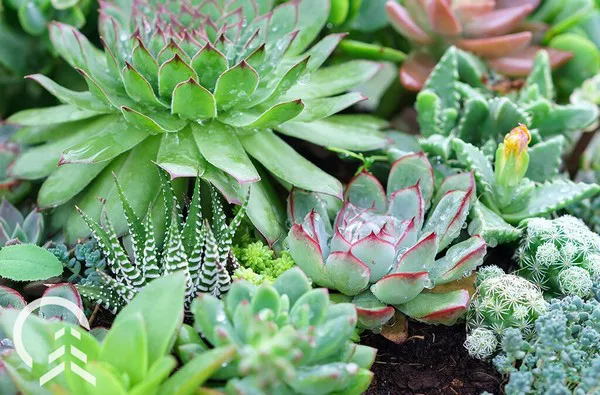Succulents are cherished by many gardening enthusiasts for their charming appearance and low maintenance requirements. However, these plants are not immune to pests, and one of the most common challenges succulent growers face is mite infestations. Mites, tiny arachnids that feed on plant fluids, can wreak havoc on succulents if left unchecked. In this guide, we will explore effective strategies for identifying, preventing, and eliminating mites from your cherished succulent collection.
Understanding the Threat: Types of Mites
Before delving into eradication methods, it’s important to familiarize yourself with the types of mites that can target your succulents. The two main culprits are spider mites and broad mites. Spider mites are more visible and leave fine webbing on plants, while broad mites are harder to spot due to their minuscule size.
1. Early Detection and Identification
Regularly inspecting your succulents is the first line of defense against mite infestations. Look out for telltale signs such as stippling or discoloration of leaves, webbing on plant surfaces, and distorted growth. Use a magnifying glass to spot mites, which are often pale in color and congregate on the undersides of leaves.
2. Cultural Practices for Prevention
Maintaining optimal growing conditions for your succulents is crucial for preventing mite infestations. Adequate sunlight, appropriate watering practices (avoiding overwatering), and providing proper air circulation discourage mites from thriving. Additionally, avoid overcrowding plants, as this can create a favorable environment for mites to spread.
3. Isolation and Quarantine
New additions to your succulent collection should be isolated and observed for several weeks before integrating them with your existing plants. This practice prevents potential mite introductions from spreading to healthy plants. Regularly inspect isolated plants for signs of mites before introducing them to the rest of your collection.
4. Pruning and Cleaning
If you notice mite-infested leaves, promptly prune and dispose of them to prevent mites from spreading. Cleaning the plant’s surroundings is also essential. Remove fallen leaves and debris where mites could hide and reproduce.
5. Introducing Beneficial Predators
Incorporating natural predators of mites into your garden can be an effective biological control method. Predatory mites like Phytoseiulus persimilis and Neoseiulus californicus feed on plant-damaging mites, helping to keep their populations in check.
6. DIY Remedies
Homemade solutions can provide an extra layer of protection against mites. A common method involves mixing a gentle liquid soap (avoiding harsh detergents) with water and spraying it on the affected plants. Be sure to test any solution on a small part of the plant first to ensure it won’t harm the succulent.
7. Neem Oil Treatment
Neem oil, derived from the neem tree, is an organic remedy that disrupts mite growth and development. Dilute neem oil with water and apply it to your succulents, ensuring complete coverage, including the undersides of leaves. Regular applications over several weeks are typically necessary for optimal results.
8. Insecticidal Soaps
Commercial insecticidal soaps are available for purchase and can effectively eliminate mites. These soaps break down the protective coating of mites, leading to their dehydration and death. Follow the manufacturer’s instructions for proper application and safety precautions.
9. Miticides
When mite infestations are severe and other methods have failed, miticides can be considered. Miticides are formulated to target mites specifically while minimizing harm to beneficial insects. Carefully read and follow the product instructions, and avoid using them excessively to prevent resistance development.
10. Regular Monitoring and Maintenance
After successfully addressing a mite infestation, continue monitoring your succulents for signs of reinfestation. Regularly inspect plants and their surroundings, maintain proper growing conditions, and promptly address any issues to prevent mites from returning.
Conclusion
Mite infestations can pose a significant threat to your succulent collection, but armed with the knowledge of early detection, prevention, and eradication methods, you can effectively manage these pests. Remember that a combination of cultural practices, natural predators, and targeted treatments can help you maintain healthy and vibrant succulents. By staying vigilant and implementing proactive measures, you can enjoy your stunning succulent garden without the worry of mites diminishing their beauty.


